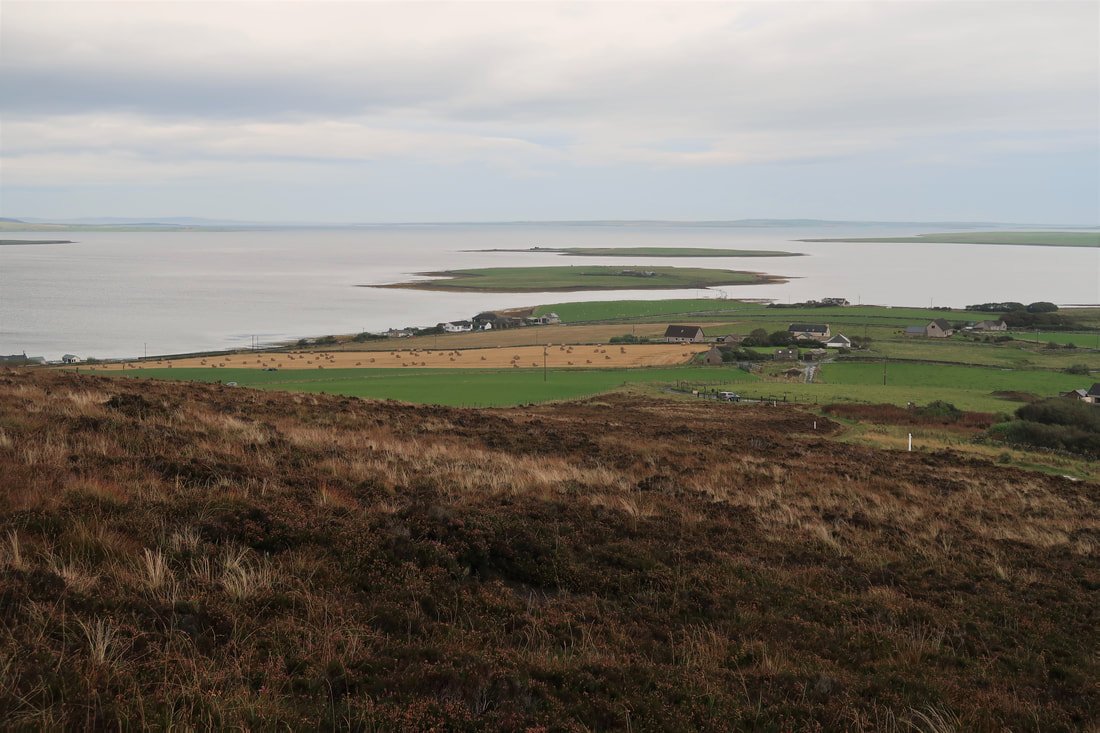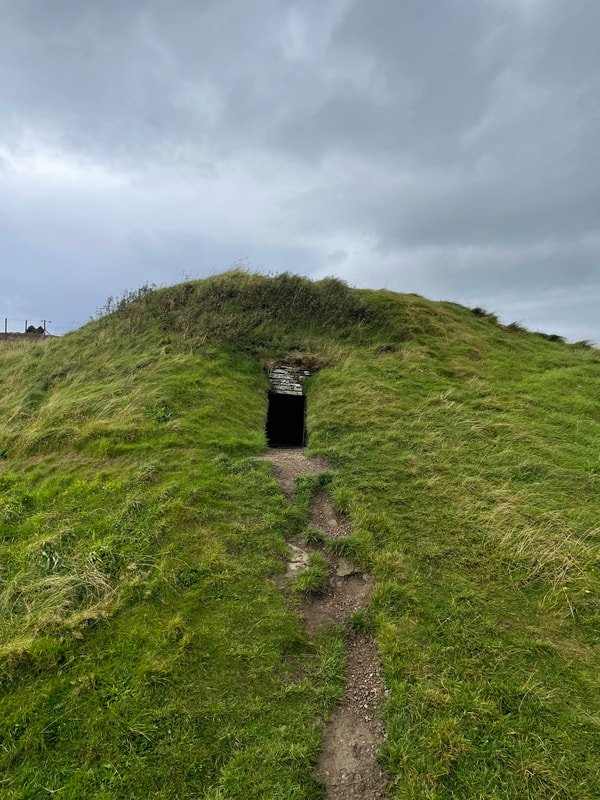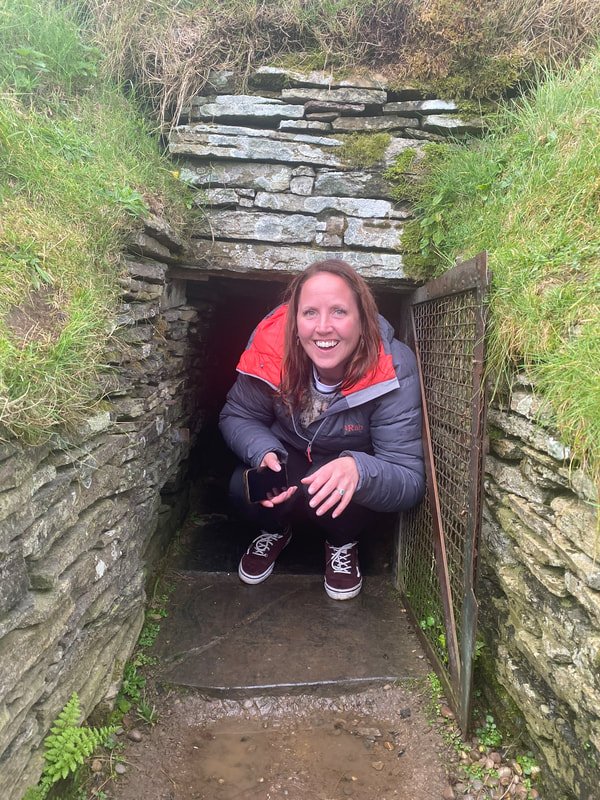Orkney’s lesser-known Neolithic sites
Exploring Neolithic Orkney
Orkney is perhaps best-known for its mind-blowing Neolithic archaeology that continues to rewrite much of what we know about prehistoric Britain, so much so that, in 1999, UNESCO designated World Heritage status to what has colloquially become known as the Heart of Neolithic Orkney.
With UNESCO World Heritage Status, The Heart of Neolithic Orkney is undeniably one of Scotland’s most incredible archaeological areas – if not the world. Made up of Skara Brae, the Ring of Brodgar, Stenness Standing Stones and Maes Howe, these fascinating sites are all within a stone’s throw of each other and have forced archaeologists to rethink settlement patterns throughout Neolithic Britain.
Thanks to Orkney.com and NorthLink Ferries for sponsoring my recent stay in Orkney. For more information on things to see and do in Orkney, visit www.orkney.com or www.northlinkferries.co.uk.
Views from Cuween Hill.
Skara Brae, overlooking the Bay of Skaill, was uncovered in the 1850s following winter storms, revealing a tantalising 5,000-year-old settlement. Skara Brae truly is one of the world’s wonders with stone-built furniture, a reconstructed house and a welcoming visitor’s centre.
As a result of their incredible allure, these sites often become very busy, particularly during the summer, as people flock to see them. In many ways, they have become victims of their own success, and as I stood at Skara Brae, dodging another tour party, I decided to explore some of the lesser-known sites that are no less enchanting than their dominating cousins.
Skara Brae Prehistoric Village
But first, let’s get the hard hitters out the way as they absolutely deserve to be visited – even if they are busy.
The Ring of Brodgar and Stones of Stenness are both vast and imposing prehistoric stone circles. The Stones of Stenness are believed to be the oldest stone circle in the UK – even older than the famous and iconic Stone Henge – and are made of four stones up to six metres high. Originally the circle held 12 stones, although several no longer stand. Nearby, The Ring of Brodgar has captivated and inspired for generations. With 36 massive stones still standing, I wondered how and why Orkney’s Neolithic population erected such a grand monument, a question archaeologists still struggle to answer today.
Ring of Brodgar
Maes Howe is an altogether different structure that stands from the surrounding flat farmland like a great green pimple. So prominent on the landscape, Maes Howe is an impressive Neolithic chambered cairn and passage grave dating to around 2,800 BC. Maes Howe is the most famous and best-preserved example of a chambered cairn in Orkney. One of the most incredible things about Maes Howe is its connection with the winter solstice. For several days around midwinter, the final rays of the day’s sunlight slip through the passage of the cairn, illuminating the darkened back wall and bathing it in soft, winter light.
These great sites offer visitors a tantalising glimpse into the life of Neolithic settlers some 5,000 years ago, and, although they ask more questions than they answer, they certainly indicate that Orkney was an important centre of the Neolithic world.
But, there are more, and it’s often said of Orkney that if you scratch the surface of the soil, the island bleeds archaeology, and we were keen to discover more.
The following offer an alternative to the busy sites, and the experiences are no less awe-inspiring.
Barnhouse Settlement
Barnhouse Settlement
Skara Brae is not the only Neolithic settlement site in Orkney. There’s evidence of homes scattered across the islands, including the Barnhouse Settlement that sits tucked away behind the Stones of Stenness close to the edge of the water of the Loch of Harray. The site was excavated in 1984 and is often missed as guests rush between The Ring of Brodgar, Stones of Stenness and nearby Maes Howe. The cluster of houses that make up this understated site would not have been unlike Skara Brae, as these homes were also found to have stone furniture, hearths and box beds similar to those found at Skara Brae. Originally the village would have incorporated around 15 houses, but today only several of these can be seen, with their low walls indicating their original size – several bigger than those found at Skara Brae.
Unstan Cairn
Unstan Cairn
Unstan Chambered Cairn sits a few miles from Maes Howe, close to the Loch of Stenness, and is one of the few Orcadian cairns found to contain human remains. Like Maes Howe, it was built around 5,000 years ago as a communal burial place, and Unusually, this is a stalled cairn with internal divisions. Unstan contained fragments of around 30 pots, some of which were decorated. Archaeologists discovered similar bowls on other sites throughout Orkney, and their style has become known as Unstan Ware.
Cuween Hill Cairn
Cuween Hill Cairn
About six miles west of Kirkwall, Cuween Hill rises from the sea with commanding views towards Finstown and out to the islands of Grimbister and Damsay. These islands feature prominently in the later Viking sagas. Cuween Hill Cairn is almost on the crest of the hill, where a rough path leads from the parking area up to the cairn itself. Accessing the cairn is a grounding experience that involves crawling into the tomb through a dark, narrow, 5-metre passageway before the tomb opens into a vast cavern. (Torches are available in a box outside the cairn entrance). Cuween was found to contain the bones of humans, dogs and oxen and makes you wonder at the burial rites of the past. Little wonder this solitary spot on the hill has long been associated with the trowie tales of folklore.
Cuween Cairn passageway
Whichever way you choose to explore Neolithic Orkney, you will come away with more questions than answers and a deep respect for those early people who began turning over the soil, forging homes and communities and honouring their dead in ways that seem both beautiful and mysterious to our modern societies.
Until next time,
Ways you can support my work…











